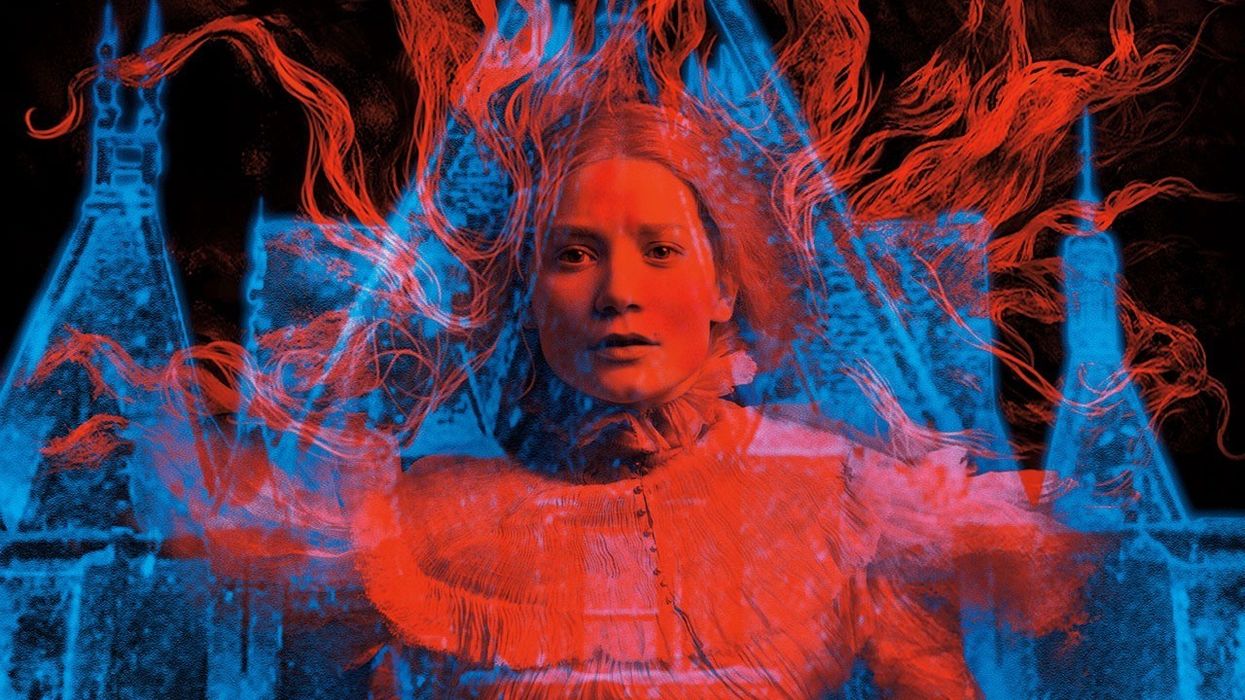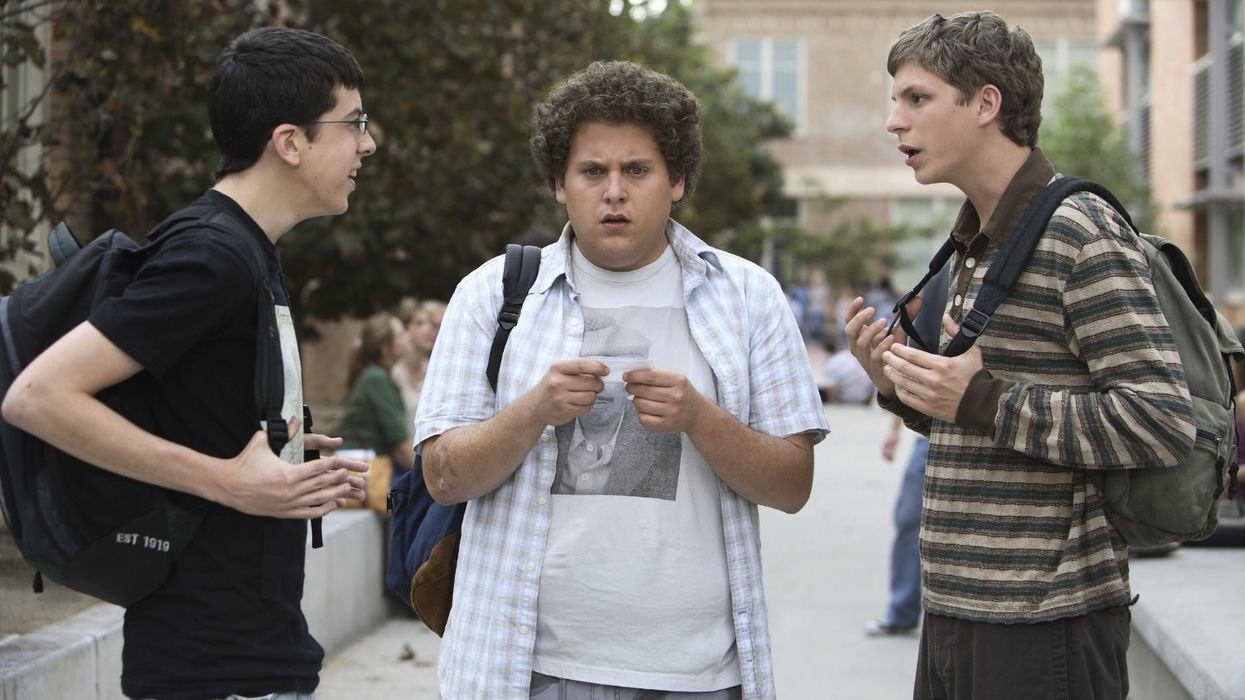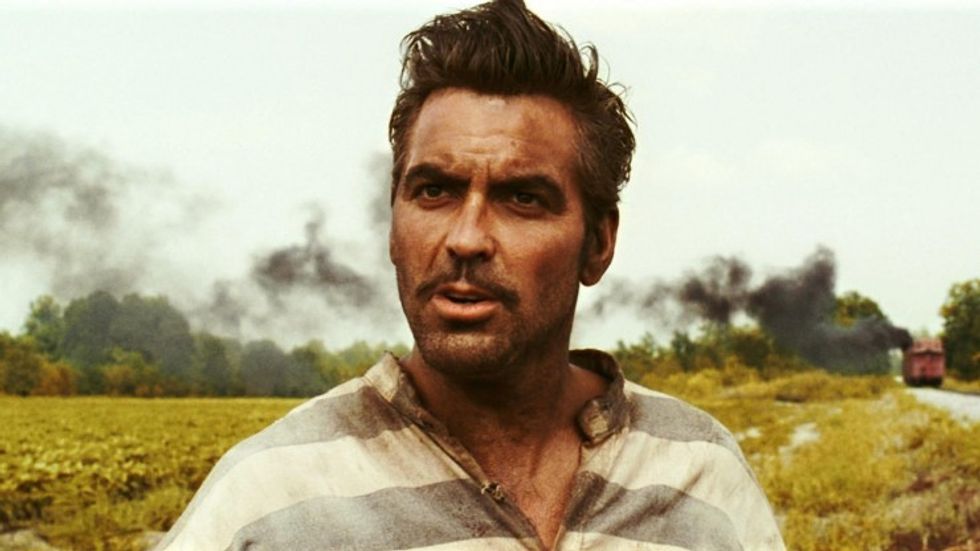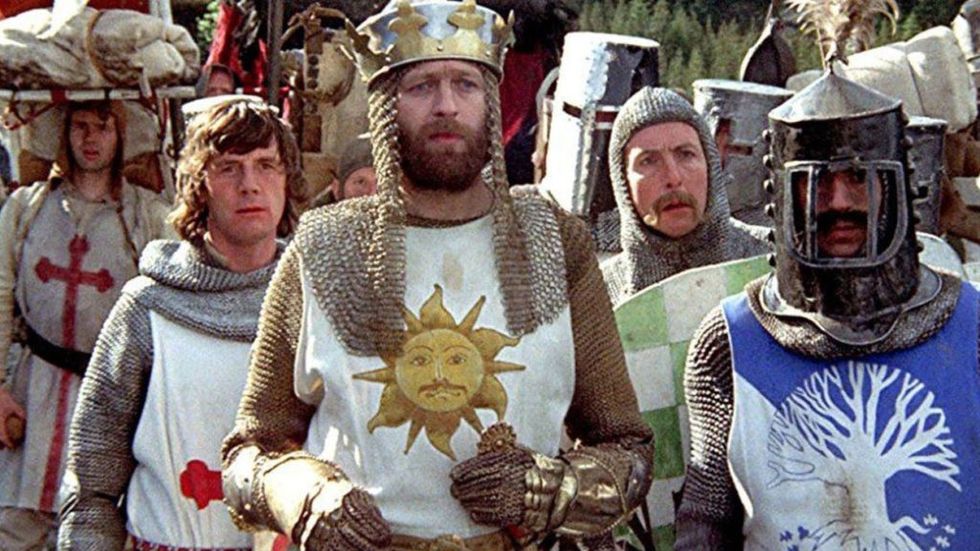Guillermo Del Toro's 11 Rules for Becoming a Visionary Filmmaker
Be brutal. Be patient. Be generous.

Each year, hosts of animation fans and industry executives flock to the French Alps for the prestigious Annecy International Animated Film Festival. This June, visionary Mexican filmmaker and animator Guillermo del Toro, an Annecy regular, returned to the idyllic lakeside community to share clips from his latest work-in-progress: the animated Netflix series Trollhunters. The never-before-seen footage was distinctly del Toro in style: an action-packed, oft-comedic fusion of fairy tale and more sinister fragments of his imagination. The teasers were met with cheers and applause, but the majority of the seminar—and the real highlight of our later conversations—focused on the director's career advice and creative philosophies.
"The audience with the deepest connection to my work are creative people: people who draw, who write, who design," del Toro said to festivalgoers. "To find an entire festival of people like that is a gift. It’s paradise. I am madly in love with Annecy Film Festival. My fucking endorphins are firing all day long. It’s first love."
"You need to choose projects that need you to exist: if you don’t make them, nobody will."
Dictionary entries for the word "visionary" should be linked to an image of del Toro's grinning, bearded face. Both author and filmmaker, he has already brought his keenly original sensibilities to an eclectic range of films, including The Devil’s Backbone (2001), Blade II (2002), Hellboy (2004), Pan’s Labyrinth (2006), Pacific Rim (2013), and Crimson Peak (2015). When he’s not realizing one of his own visions, he is often sought out as a creative advisor on other visual fantasies, such as the Hobbit films, Kung Fu Panda 2 and 3, and Megamind, to name just a few. In two decades of directing, his films have won dozens of awards, including multiple Oscars for Pan’s Labyrinth.
The day after del Toro’s seminar, No Film School caught up with the director for a deeper discussion. Here's what we learned about what it takes to be a visionary director.

1. Find your mentors
Del Toro is a born eclectic. He started out doodling in notebooks, creating fantastic worlds from his imagination that were half horror and half fairy tale. Then came animation. One of his earliest projects was a stop-motion film made with his dad’s Super 8 camera; it featured a murderous potato intent on world domination. In high school, he taught an animation workshop, then learned how to craft highly imaginative visual narratives.
His imagination was fostered by excellent mentors. Del Toro spent 10 years working for “The Godfather of Makeup,” Dick Smith, known for his work on Taxi Driver, The Exorcist, The Godfather, and Amadeus. Del Toro credits this mentorship as giving him both the “discipline to break down an effect into cinematic elements, and a lot of work ethic.”
"Each film is a different exercise."
He also studied screenwriting for three rigorous years under veteran Mexican director Jaime Humberto Hermosillo, whom del Toro describes as "so tough." He was thankful for the tough love, however, comparing his teachers to “Zen masters, who turn away all disciples except the one persistent guy who won’t stop coming back.” Furthermore, he credits his longtime animation partner Rigo Mora as an important mentor: together, they founded the Mexican SFX house Necropia.
All the training paid off. In 1993, del Toro made his first feature film, the highly regarded Cronos, at age 29. Its dark fantasies infused with poetic sensibilities still mark his signature style.

2. Form is content
"I devote a huge part of every day to just thinking," said del Toro. "I think about story, images, color, and which elements to push. Visually, Pacific Rim is just as intricate as Crimson Peak or Pan’s Labyrinth, but each film is a different exercise. Just like a sculptor might sculpt with different materials, I love to work in different mediums."
Though he loves animation—"it's the ultimate form of creativity, creating from scratch"—the director also loves working with actors. "The loneliest positions on set are director and actor," del Toro said, "but if you watch each other closely and form an incestuous kinship, great stuff can happen."
"Those films that survive are a combination of talent, luck, and brutality."
Del Toro’s favorite movies are ones that "sink in because of strong visuals and stay with me long after the screening," he said. "I can remember the exact time of day when I saw my favorite movies." He cites Francis Ford Coppola’s Dracula (1992) as one of his all-time favorites. "I didn’t understand it the first time I saw it, but the visuals made me want to see it again," he said.
In del Toro's mind, form and style are an essential part of storytelling. "To me, visual is narrative," he said. "Film is analyzed incorrectly most of the time, as content and style—but those are not separate entities. Colors, light, design, texture...all of those are narrative elements."
For del Toro, the first impression of a character is the most important, and it hinges entirely upon the visuals. "When a character shows up—the way he’s standing, the way he’s dressed—that’s the first line he speaks to an audience, visually," the director said. "Film has many languages, and wardrobe is one of them. We present ourselves in different ways. There is a huge component of film analysis that should be about the composition."
"Life is a fucking paradox. You realize what you have when you don’t have it."
"[Film is] like a Gauguin painting," del Toro continued. "You have to analyze the brush strokes, the vigor of the color palette—not just the fact that it depicts women laying around on the floor with fruit. It’s vibrant and powerful, with confident, thick brush strokes….We don’t look at film that way, but we fucking should."

3. Know your strengths and weaknesses
"Use both your strengths and weaknesses to your advantage," del Toro said. "It’s important to know what you’re good at—and what you like doing."
From an early age, del Toro knew that he had a knack for makeup FX and storyboarding, so he used those skills to help other people with their projects and saved up the favors earned. He estimates that he worked on 13 movies, 20+ episodes of TV, and numerous commercials. “So everyone owed me a little favor,” he said. Eventually, the director accumulated enough support to close his SFX house and make his first feature.
"Your style emerges out of the things you don’t do well."
“Almost no one is good at everything,” del Toro said, “but we are not just the good parts of what we do; we are also the bad parts. Your style emerges out of the things you don’t do well." He offered Stanley Kubrick as an example. "His first feature, Fear and Desire, is incredibly stiff and creaky, but it is exactly his style. What later became parsimonious and controlled—the essence of Kubrick—started out as a defect."
4. Follow your passion
"It’s pretty simple: you can’t fuck without a boner," quipped del Toro. "You have to love what you do. If you don’t, you’ll lose interest part of the way through production. You don’t want to wake up early every morning for a year to work on a movie you don’t want to die for."
Del Toro disagreed with the reasons why most films are developed and produced. “You need to choose projects that need you to exist: if you don’t make them, nobody will. To me, the beauty of film is when someone connects with the movie on a molecular level; when art resonates personally and shapes who you are.”

5. Give 110%
“Even when it’s not your project, give it 110%," del Toro said. "If you put yourself on the line—pull yourself into your work with a passion—there is no bad job. I’m serious! You work at a Kinkos? Work at Kinkos 110%. You’ll get characters and stories from your experiences… but if you spend your time there dreaming of your acceptance speech at Sundance, you’re fucked. Focus on the job during the job, and you’ll learn a lot. Save those Sundance dreams for when you’re home at night.”
Del Toro speaks from experience. Before becoming a director, he sold real estate. He made an effort to get to know his clients’ stories, where the people came from, and why they were buying a house. He also cites taxi drivers as a source of inspiration: “They tell you the best fucking stories, and if they’re fat, they give you the best dieting tips.”
His time off the job, however, was spent researching vampires. Out of all that life experience came Cronos. He looks back on those early years with a grin. "I worked on projects I didn’t love," he said, "but I still loved every minute of the job."
6. Be promiscuous
Del Toro likes to alternate between large projects and small. "I try to go from one to the other, to apply myself fully, both emotionally and spiritually, to whatever project I‘ve chosen to do," he said.
"Hold on to your idiosyncrasies! Each cultural flavor is important in the world."
Del Toro recalls a conversation he had with fellow Mexican auteur, Alfonso Cuarón. After del Toro had just directed Blade II; Cuarón was set to direct the third Harry Potter. Their discussion revolved around the struggle to maintain a sense of their own artistry while directing films in a franchise. Del Toro’s solution? “Be promiscuous with your material! You kiss it, you hug it, you roll around in bed with it. There’s gonna be hair samples, you’re gonna leave some DNA in there if you make a movie wholeheartedly. Don’t be distant! Get down and dirty.”

7. Trust your instincts
Del Toro said to be yourself; don’t give in to professional pressure. “Studio heads always use the word 'no,' but they try not to hear it," he said. "And artists don’t always have the courage to say it. So hold on to your idiosyncrasies! Each cultural flavor is important in the world. We live on a global island so threatened by homogenized content that if we don’t watch out, we’ll wind up with a single flavor. But you don’t want that! You don’t want it in your food, or your coffee, or your culture.”
8. Make mistakes
“You need accidents for a narrative to feel complete," said del Toro. "There is beauty in mistakes.” To prove his point, del Toro cites French Impressionist painting and the Japanese aesthetic philosophy of Wabi Sabi, a derivative of Buddhism that values transient beauty. He explains that he looks for these qualities in his films: the imperfect, the impermanent, the incomplete.
“I’ve already produced nine first-time directors.”
When I asked if his creative philosophies include the Japanese idea of Shokunin—a rather spiritual, zen craftsman approach to art, where perfection is unattainable, and striving is everything—he agreed. “I think I practice a kind of 'Mexican Zen,'" he said.
9. Be brutal
Del Toro describes film as "raw sensibility and evolutionary brutality."
"Those films that survive are a combination of talent, luck, and brutality," he said. For del Toro, the brutal part includes killing your darlings. “Once a movie is out, it’s out—but before then, it’s crucial to judge your project severely. Many of the best directors don’t make it to the final line because that evolutionary element—going from raw and unbridled to rigorous—is missing.”
Even when del Toro is a creative consultant on other people’s films, he cuts material without mercy. He recalls the time he cut seven minutes of animated footage, essentially trashing hours of meticulous work, from Megamind. And he laughed while doing it.

10. Be patient
"The most desperate time is when you’re in your 20s," said del Toro. "You feel like you’re too late, that you’ve wasted your life. Then when you’re 30 you realize, 'No, I was just obscenely young, and it was the best time ever: anything was possible!' But you don’t realize that when you’re 20. Life is a fucking paradox. You realize what you have when you don’t have it. So enjoy it; explore your freedom. Find out who you are. It takes time to become a professional.”
11. Be generous
Despite his success, del Toro hasn’t forgotten his own uncertain years. In fact, he loves to champion first-time directors. “I was a first-time director once, and someone incredibly good came into my life: Marta Navarro, who to this day is still my producing partner," he said. "She trusted me. So I try to do that for other people. I meet them in comic book shops, or at festivals like Annecy. Some of them become collaborators; some direct their own projects.”
His pride is visible. “I’ve already produced nine first-time directors.”
Del Toro is particularly proud of the animated film The Book of Life by first-time director Jorge Guitierrez. “Jorge came to me, and he was Mexican, funny, and fat, so I said, 'That’s a great guy,'" remembered del Toro. "His story was beautiful, too, and I thought, 'If I don’t produce this guy’s movie for him, it will die.' So I did it.”













